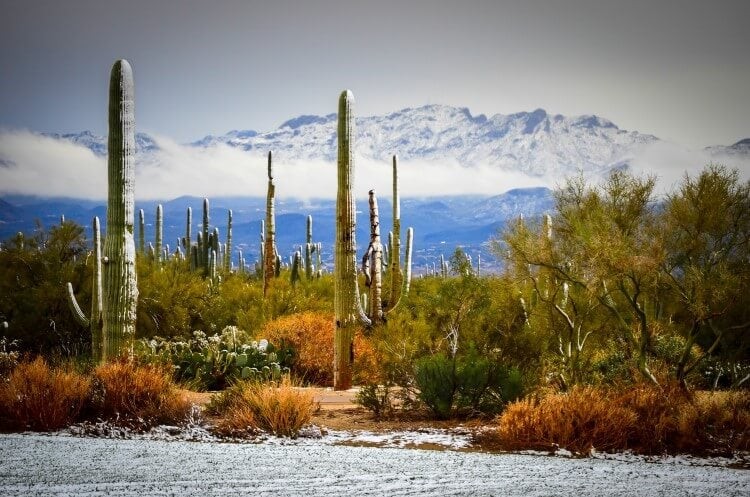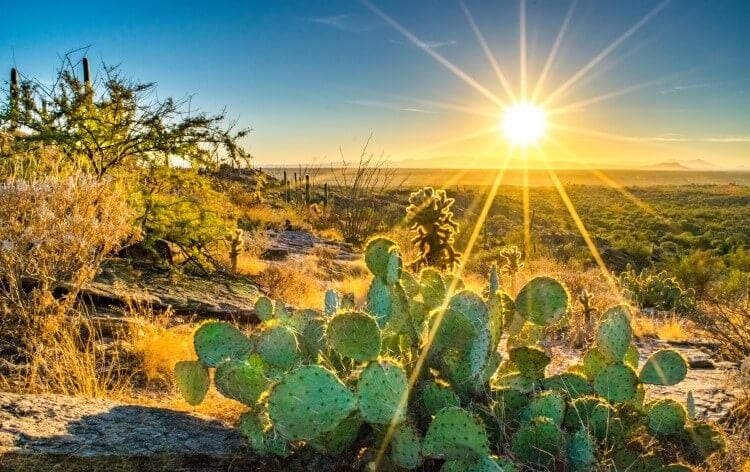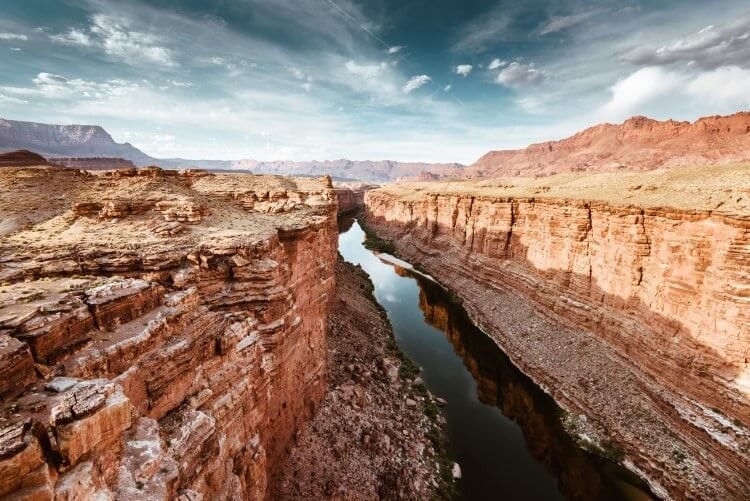Arizona, the Grand Canyon State, is a land of captivating contrasts. From the iconic Grand Canyon to the sprawling Sonoran Desert, the state offers breathtaking landscapes and a wealth of outdoor adventures. Figuring out the Best Time To Travel To Arizona depends on your priorities – are you seeking mild weather for hiking, fewer crowds at popular attractions, or specific events and festivals? This comprehensive guide breaks down Arizona’s seasons and months, helping you pinpoint your ideal travel window.
Arizona’s diverse geography creates varied climate zones. Southern Arizona, home to Phoenix and Tucson, experiences a classic desert climate with scorching summers and mild winters. Northern Arizona, including Flagstaff and the Grand Canyon, boasts higher elevations and four distinct seasons, including snowfall in winter. Understanding these regional differences is key to planning your perfect Arizona getaway.
Understanding Arizona’s Climate: A Tale of Two Regions
Arizona’s climate is largely defined by its dramatic elevation changes and desert landscapes. Knowing the general weather patterns is crucial for determining the best time to visit Arizona for your desired activities.
Generally, Arizona enjoys over 300 sunny days a year, making it a sun-seeker’s paradise. However, temperatures fluctuate significantly depending on location and season.
-
Southern and Central Arizona (Phoenix, Tucson, Scottsdale): Characterized by a hot desert climate. Summers are extremely hot, with temperatures often exceeding 100°F (38°C). Winters are mild and sunny, making it a popular winter destination. Spring and Fall offer pleasant, warm days and cooler evenings.
-
Northern Arizona (Grand Canyon, Flagstaff, Sedona): Features a more varied climate due to higher elevations. Summers are warm and comfortable, a welcome escape from the desert heat. Winters are cold, with snow common, especially in Flagstaff, which is known for its skiing. Spring and Fall bring mild temperatures, although spring can be windy, particularly at the Grand Canyon.
 Arizona cacti with a dusting of snow
Arizona cacti with a dusting of snow
Best Time to Visit Arizona: By Season
To pinpoint the best time to travel to Arizona, let’s delve into each season’s characteristics:
Spring (March – May): Mild Weather and Blooming Deserts
Spring is widely considered one of the best times to visit Arizona, offering a sweet spot between mild temperatures and vibrant natural beauty.
- Weather: Days are pleasantly warm, averaging from the 70s to 80s°F (21-27°C) in southern Arizona and cooler in the north. Evenings are comfortably cool. Rainfall is minimal.
- Pros: Ideal weather for hiking, exploring national parks, and outdoor activities across the state. Desert wildflowers bloom, creating stunning landscapes. Fewer crowds than peak winter months, except during Spring Break.
- Cons: March can still be chilly in northern Arizona, and snow may linger at higher elevations. Spring Break can bring increased crowds and higher prices, especially in popular spring break destinations like Scottsdale and Phoenix. Wind can be strong in April, particularly around the Grand Canyon.
- Activities: Hiking in Sedona and the Grand Canyon (South Rim), exploring desert botanical gardens, golfing, spring training baseball games in Phoenix, Arizona Renaissance Festival, Phoenix Pride Festival.
Summer (June – August): Sizzling Heat and Monsoon Season
Summer in Arizona is characterized by intense heat, especially in the southern desert regions. However, it can still be a viable time to visit, particularly if you focus on northern Arizona or indoor activities.
- Weather: Extreme heat is the defining feature of summer in southern Arizona, with temperatures regularly exceeding 100°F (38°C) and sometimes reaching 110°F (43°C) or higher. Northern Arizona is significantly cooler, but still warm. Monsoon season typically arrives in July and August, bringing afternoon thunderstorms, which can be intense but brief.
- Pros: Lower prices and fewer crowds, especially at resorts and hotels in southern Arizona. Northern Arizona offers a cooler escape from the desert heat. Summer monsoons can create dramatic skies and landscapes. Indoor attractions in cities like Phoenix and Tucson are in full swing.
- Cons: Extreme heat makes outdoor activities challenging and potentially dangerous in southern Arizona during the day. Hiking is best done in the early morning or late evening. Monsoon season brings risks of flash floods, dust storms (haboobs), and lightning.
- Activities: Indoor attractions in Phoenix and Tucson (museums, art galleries, shopping), water parks, early morning hikes, nighttime stargazing, 4th of July celebrations, Christmas in July events, exploring cooler areas of northern Arizona.
Fall (September – November): Pleasant Temperatures and Festive Events
Fall is another prime time to visit Arizona and is often considered the best time to travel to Arizona for overall pleasant conditions and a variety of events.
- Weather: Temperatures begin to cool down from the summer highs, with daytime temperatures ranging from the 70s to 80s°F (21-27°C) in southern Arizona and cooler in the north. Evenings are comfortably cool. Monsoon season subsides in September, leading to drier conditions.
- Pros: Ideal weather for outdoor activities, hiking, and exploring national parks. Beautiful fall foliage in northern Arizona, especially in areas like Oak Creek Canyon near Sedona. Numerous fall festivals and events throughout the state. Fewer crowds than peak winter season.
- Cons: Early September can still be quite warm. Wildfires can be a concern in late summer and early fall, potentially affecting air quality and access to certain areas.
- Activities: Hiking and biking in Sedona, Grand Canyon, and other national parks, attending fall festivals and harvest events, Arizona State Fair, Arizona Taco Festival, Halloween events, exploring fall colors in northern Arizona, sporting events (football, baseball).
Winter (December – February): Mild Days and Snowy Peaks
Winter in Arizona offers a delightful contrast: mild, sunny days in the south and snow-covered landscapes in the north. This makes it a popular time for “snowbirds” seeking warmth and winter sports enthusiasts alike, and a strong contender for the best time to travel to Arizona for specific interests.
- Weather: Southern Arizona enjoys mild, sunny days, with average temperatures in the 60s and 70s°F (15-21°C). Evenings can be cool, dropping into the 40s°F (4-10°C). Northern Arizona experiences winter conditions with snow, especially at higher elevations like Flagstaff and the Grand Canyon’s North Rim (which often closes for the winter).
- Pros: Perfect weather for exploring desert cities like Phoenix and Tucson, golfing, and outdoor activities in southern Arizona. Skiing and snowboarding in northern Arizona (Flagstaff). Festive holiday events and celebrations throughout the state.
- Cons: Winter is peak season in southern Arizona, meaning higher prices and larger crowds, especially around the holidays. Northern Arizona can be very cold and snowy, limiting access to some areas and activities. Grand Canyon’s North Rim is closed.
- Activities: Hiking and exploring in southern Arizona, golfing, visiting desert botanical gardens, skiing and snowboarding near Flagstaff, holiday light displays and events, Arizona Rock n’ Roll Marathon, Arizona Beer Week, Scottsdale Parada Del Sol.
 Sunrise over the Arizona desert
Sunrise over the Arizona desert
Arizona Month-by-Month Breakdown: Planning Your Trip
Let’s dive into a month-by-month guide to help you pinpoint the best time to visit Arizona based on specific interests and events:
January: Pleasant and dry weather statewide, with potential snow in northern Arizona. Ideal for exploring Phoenix and Tucson, and enjoying winter events like the Arizona Rock n’ Roll Marathon and Holiday Lights in Phoenix.
February: Warm and dry, with fewer crowds than later winter months. Excellent for golfing in southern Arizona, skiing in the north, and attending events like Arizona Beer Week and Scottsdale Parada Del Sol.
March: Spring arrives, bringing warmer days and blooming deserts. Peak season around Phoenix due to Spring Training baseball. Good weather for hiking, but expect crowds and higher prices. Arizona Renaissance Festival is a highlight.
April: Variable weather, with strong winds possible, especially in northern Arizona. Quieter month at the Grand Canyon (South Rim still accessible). Good for city exploration in southern Arizona, attending jazz festivals and the Phoenix Pride Festival.
May: Temperatures rise, but still pleasant for outdoor activities, especially in the mornings and evenings. Ideal for stargazing and enjoying clear desert nights. Phoenix’s Cinco de Mayo festival is a vibrant event.
June: Heat intensifies, particularly in southern Arizona. Quieter month for tourism. Focus on indoor attractions or cooler regions of northern Arizona. Vintage fairs and craft shows are options for indoor entertainment.
July: Hottest month, monsoon season begins. 4th of July celebrations are widespread. Unexpected events like Christmas in July in Glendale offer unique experiences. Limit outdoor activity to early morning or evening.
August: Still very hot and monsoon season continues. Lowest tourist crowds mean potential bargains. Nighttime flashlight walks at the Desert Botanical Garden and museum exhibitions offer respite from the heat.
September: Temperatures begin to cool, monsoon season subsides. Still warm but evenings are more comfortable. Sporting events like Arizona Cardinals and Arizona Diamondbacks games become prominent.
October: One of the best times to visit Arizona. Mild and comfortable weather perfect for outdoor activities, especially at the Grand Canyon. Numerous fall festivals, the Arizona State Fair, Arizona Taco Festival, and Halloween events take place.
November: Pleasant weather continues, snowbirds arrive, and crowds increase. Cave Creek Wild West Days and harvest festivals are among the many events.
December: Perfect winter sun destination. Warm days, cool evenings, and festive holiday events throughout the state. Great time for outdoor adventures in southern Arizona and skiing in the north. Holiday art events in Phoenix.
 Fireworks over Phoenix
Fireworks over Phoenix
Best Time to Visit Arizona National Parks: Balancing Weather and Crowds
Arizona’s national parks, including the Grand Canyon, Petrified Forest, and Saguaro, are major attractions. The best time to visit Arizona national parks depends on the specific park and your tolerance for crowds and weather.
- Grand Canyon National Park: Shoulder seasons (Spring and Fall) are generally considered the best time to visit the Grand Canyon. The weather is mild, and crowds are smaller than in peak summer months. Summer is the busiest and hottest time, while winter brings snow and potential closures of the North Rim.
- Saguaro National Park: Winter is the peak season for Saguaro National Park, offering mild temperatures ideal for hiking and exploring the desert landscape. Spring and Fall are also pleasant. Summer is extremely hot and should be avoided for strenuous activities.
- Petrified Forest National Park: Spring and Fall are the most comfortable times to visit, with mild temperatures. Summer can be hot, but thunderstorms can provide dramatic skies. Winter can be cold, with occasional snow.
 The Grand Canyon
The Grand Canyon
Find Your Perfect Arizona Getaway
Ultimately, the best time to travel to Arizona is subjective and depends on your personal preferences and travel priorities. Whether you seek the blooming deserts of spring, the cooler temperatures of fall, the winter warmth of the south, or even the unique experiences of an Arizona summer, this diverse state has something to offer year-round.
To enhance your Arizona adventure, consider staying in a luxurious vacation rental. Explore Arizona vacation homes for a comfortable and convenient base to discover all that the Grand Canyon State has to offer, no matter the season.